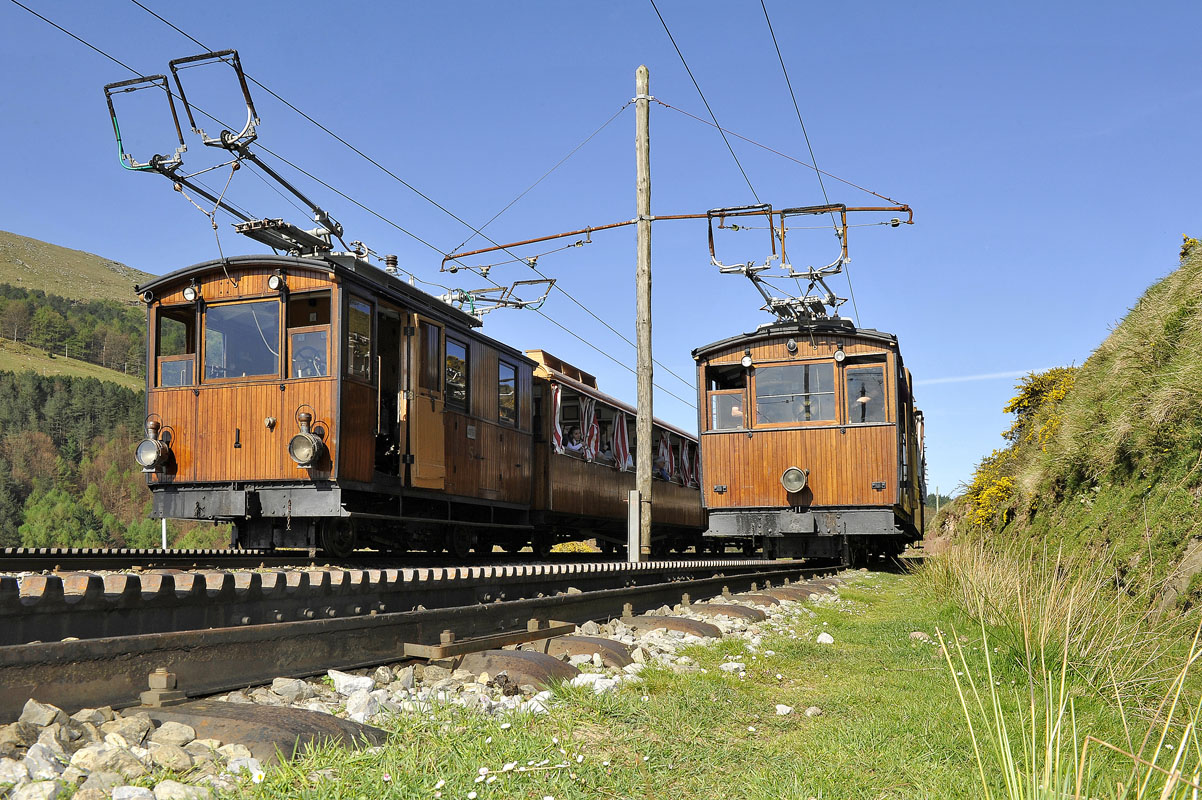Skip to content
Skip to navigation
- 1859: The Empress Eugenie de Montijo’s climb to the summit. A granite obelisk was erected to commemorate this event.
- 1908: The idea came about to build a railway.
- 1912: Works began.
- 1913: A public limited company for the Basque Railway, the Société Anonyme des Chemins de Fer Basques, was set up
- 1914: It took on the name of VFDM (Voies Ferrées Départementales du Midi).
- 1914: The First World War broke out – with tracks laid down up to Trois Fontaines – with no power supply. The works were suspended until 1919.
- 1919-1924: The works resumed activity: rapid construction, since there was no road structure.
- 7 January 1924: Accident during construction. The cogwheel on the steam locomotive came off the rack. It rolled down 100m and derailed.
- 25 April 1924: Inauguration of the 1st section (Trois Fontaines).
- 30 June 1924: Inauguration of the line up to the summit.
- 1930: Reforestation, 40 000 tree seedlings were planted, of 15 varieties.
- 1935: The train stopped operation during the winter.
- 1939-1945: Second World War: The soldiers occupied the land. Smugglers enabled the French to go across the Spanish border. Weather radar equipment was set up at the summit. Tourist activity started up again.
- 1958: Due to the great affluence of cars, a car park was set up.
- 1960: The French national broadcasting company (ORTF) used La Rhune to relay television broadcasts for channel 1.
- 1966: An emitter – channel 2. The ORTF set up the emitter inside the former Imperator Hotel
- 1967: VFDM (Voies Ferrées du Midi) had a waiting room built as well as a pathway up to the summit of La Rhune.
- 1968: The ORTF erected a new building and a 60-metre TV mast.
- 1980: The French slope was listed as a “classified site”.
- 1981: A 3rd train was brought into service.
- 1989: The SHEM (Société Hydroélectrique du Midi) became the concession holder.
- 1995: CFTA became the operator, with an 18-year contract.
- 1996: A 4th train was brought into service.
- 1998: More than 350 000 visitors took the “Petit Train”. La Rhune became the most popular tourist attraction in the region!
- 1999: The “Petit Train de la Rhune” celebrated its 75th anniversary.
- 2003: The La Rhune Massif was given ecological recognition in collaboration with the LPO (Bird Protection League); la Rhune, Basque Mountain.
- 2004: The “Petit Train de la Rhune” celebrated its 80th anniversary.
- 2006/2007: An exhibition was devoted to rack railway technology.

